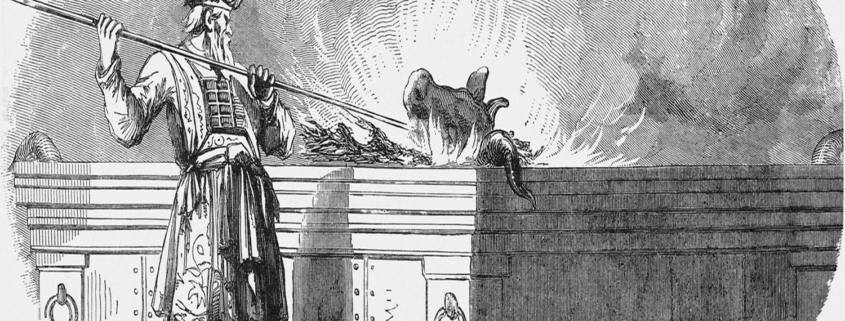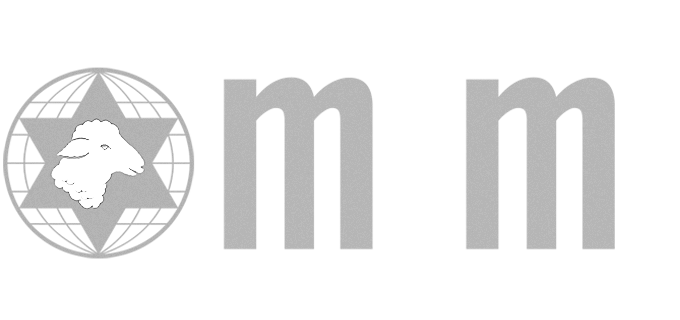God of Atonement, Pt. 2
What Is the Good News of Yeshua? (Part 14)
As the first anniversary of the Exodus drew near, while Israel remained at the mountain, God proceeded to detail through Moses the patterns and particulars of the priestly, propitiatory order (Leviticus 1:1ff). Serving also as food for the priests, the edible offerings brought by the people often included various combinations of grain, flour, bread, oil, spice, salt and wine. Yet most of the different types of offering-payments were mainly those of animal sacrifice, ranging from the less expensive turtledoves or pigeons to the larger and increasingly more costly sheep, goats and bulls. The people were invited to make voluntary offerings as acts of devotion to express thankfulness (7:12) or to make a vow (7:16). But when God’s commands were broken—resulting in sin—only a sin offering would suffice.
The requirements for the sin offering would vary in detail and intensity, depending upon the type and severity of the sin. To begin with, God made provision for unintentional sins—for when someone would do “something against one of all the commands of Adonai his God… through inadvertence” (4:22). Distraction, forgetfulness or carelessness, then, would be no excuse, for guilt would nevertheless be accrued. By contrast, in the event a person sinned but “had not known it” was sin (5:17), God’s mercy would lessen the penalty—though a penalty would be exacted nonetheless.
The sin offering was also prescribed as a remedy for specific sins, such as the failure to come forward with eyewitness testimony (5:1), or for uttering a rash or thoughtless oath—either for good or evil (5:4). God singled out specific acts that violated His commands as warranting special attention and treatment at the altar. He also allowed for more lenient penalties for those who could not afford to pay full price.
But perhaps the most punitive of the sin offerings was demanded in cases of deceit, pilferage and oppression of a fellow member of the community. God considered these sins and others like it to be unfaithful acts against Him (6:2-3). Such sacrifices would require not only the highest-priced, lenience-free sin offering itself, but complete restitution to the victim plus some. While all sin would be considered to have netted some degree of guilt, not all sin, it seems, was created equal.
And still, regardless of the motivation or offense behind the bringing of the animal sacrifices, even the least of them were, in many ways, a gory—albeit humane—butchery. Handed over to the priests, each fowl’s head would be wrung off without separating it completely from the neck—their feathers removed, and their carcasses torn open by the wings. The priests would slit each mammal’s throat, strip off its skin, flay open its body, cut it into pieces, and wash its entrails—with the fat, kidneys and liver. Eventually, the priests would place the parts of the animal upon the fiery altar and thoroughly burn up the remains, save any portion commanded to be set aside for the tired and hungry mediator’s meal.
But the grandest mayhem—and greatest gift—was wrought not by the copious slaying and dismemberment of guiltless animals, but by the shedding and emptying of those volumes of innocent blood: sprinkled in front of the holy place’s veil; placed on the altar’s horns; drained and poured out at the base of the pedestal; thrown and splashed against its sides. And although each individual’s offerings never failed to yield the necessary, crimson fluid, the sacrifices hardly stopped there. In accordance with their divinely commanded duties, the priests would also offer two lambs every single day—twice as many every seventh. More than twenty times a year, they would add to the slaughter seven lambs, two bulls, a ram, and often a goat. And during the great, annual fall Feast—in a descending mass of flesh and blood—they celebrated the life sustained by their covenantal God through the sacrifice of seven goats, fourteen rams, seventy bulls, and ninety-eight lambs. Each year, hundreds if not thousands of blameless beasts—incapable of understanding, much less of misdeeds—were offered up to God to pay a price they never owed: the cost and consequences of human frailty and sin.
Did this post bless you?
♥
The sacrificial climax of Israel’s year, however, would be absent the activity and presence of the people (16:17). On that holiest of days, the high priest—by himself, on his own—would enter silently into the sacred enclosure and, through the death of just three innocent animals, perform his most solemn and essential duties. Having sprayed the blood everywhere and on everything in that set-apart place, the high priest would then lay his hands on one of the animals’ heads, and “confess over it all the guilt of the sons of [Israel] and all their violations in all their sins” (Leviticus 16:21). Despite every voluntary and sin offering of the people—after a year’s worth of extensive bloodletting and dissections—there still remained souls that needed cleansing and sins that needed covering. For the time being, this ceremony’s uncommon, priestly work would be the best once-for-all remedy for sin—yet merely “a shadow of the coming good things” (Hebrews 10:1). The lone high priest had made “atonement for himself, and for his house, and for all the gathered of [Israel]” (Leviticus 16:17)—one mediator, one payment, one cleansing, one reconciliation.
What do you think? Share your thoughts in the comments below!







Thankyou Jesus for being the sacrifying need for all – that now we may glory in Your ressurected power, and live lives of hope for others to witness and join the Family.
That was an intense read!!!!